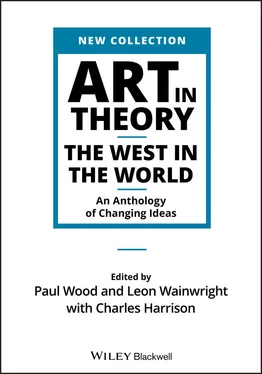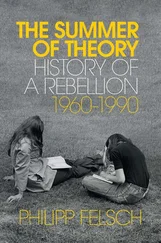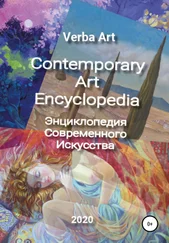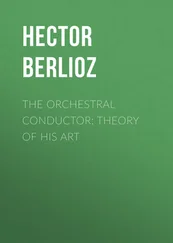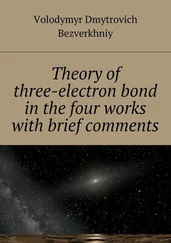Some religion they have already, which although it be far from the truth, yet being as it is, there is hope it may be the easier and sooner reformed.
They believe that there are many Gods which they call Mantóac , but of different sorts and degrees; one only chief and great God, which hath been from all eternity. Who as they affirm when he purposed to make the world, made first other gods of a principal order to be as means and instruments to be used in the creation and government to follow; and after the Sun, Moon, and Stars, as petty gods and the instruments of the other order more principal. First they say were made waters, out of which by the gods was made all diversity of creatures that are visible or invisible.
For mankind they say a woman was made first, which by the working of one of the gods, conceived and brought forth children: and in such sort they say they had their beginning.
But how many years or ages have passed since, they say they can make no relation, having no letters nor other such means as we to keep records of the particularities of times passed, but only tradition from father to son.
They think that all the gods are of human shape and therefore they represent them by images in the forms of men, which they call Kewasowok one alone is called Kewás ; them they place in houses appropriate or temples which they call Mathicómuck ; where they worship, pray, sing, and make many times offerings unto them. In some Mathicómuck we have seen but one Kewas , in some two, and in other some three. The common sort think them to be also gods. […]
Most things they saw with us, as mathematical instruments, sea compasses, the virtue of the lodestone in drawing iron, a perspective glass whereby was showed many strange sights, burning glasses, wildfire works, guns, books, writing and reading, spring clocks that seem to go of themselves, and many other things that we had, were so strange unto them, and so far exceeded their capacities to comprehend the reason and means how they should be made and done, that they thought they were rather the works of gods than of men, or at the leastwise they had been given and taught us of the gods. […]
A Weroan or great Lord of Virginia
The Princes of Virginia … wear the hair of their heads long and bind up the end of the same in a knot under their ears. Yet they cut the top of their heads from the forehead to the nape of the neck in manner of a cockscomb, sticking a [feather] of some bird at the beginning of the crest upon their foreheads, and another short one on both sides of their ears. They hang at their ears either thick pearls, or somewhat else, as the claw of some great bird, as cometh in to their fancy. Moreover they either pounce [tattoo] or paint their forehead, cheeks, chin, body, arms, and legs … They wear a chain about their necks of pearls or beads of copper, which they much esteem, and thereof wear they also bracelets on their arms … They hang before them the skin of some beast very finely dressed in such sort, that the tail hangeth down behind. […] When they go to battle they paint their bodies in the most terrible manner that they can devise.
One of chief Ladies of Secota
The women of Secotam are of reasonable good proportion. In their going they carry their heads dangling down, and [are wrapped] in a deer skin very excellently well dressed, hanging down from their navel unto the mids of their thighs, which also covereth their hinder parts. The rest of their bodies are all bare. The fore part of their hair is cut short, the rest is not over long, thin and soft, and falling down about their shoulders. They wear a wrath [circlet] about their heads. Their foreheads, cheeks, chins, arms and legs are pounced [tattooed]. About their necks they wear a chain, either pricked or painted. They have small eyes, plain and flat noses, narrow foreheads, and broad mouths. For the most part they hang at their ears chains of long pearls, and of some smoothed bones. […]
The people of this country have an Idol, which they call Kiwasa : it is carved of wood in length 4 foot whose head is like the heads of the people of Florida, the face of a flesh colour, the breast white, the rest is all black, the thighs are also spotted with white. He hath a chain about his neck of white beads, between which are other round beads of copper which they esteem more than gold or silver. This Idol is placd in the temple of the town of Secotam, as the keeper of the dead kings corpses. Sometime they have two of these idols in their churches, and sometimes 3, but never above, which they place in a dark corner where they show terrible. These poor souls have none other knowledge of god although I think them very desirous to know the truth. For when as we kneeled down on our knees to make our prayers unto god, they went about to imitate us, and when they saw we moved our lips, they also did the like. Whereof that is very like that they might easily be brought to the knowledge of the gospel. God of his mercy grant them this grace.
IB9 Bernardo de Balbuena ( c. 1561/68–1627) from Grandeza Mexicana
Bernardo de Balbuena is now acclaimed as the first Hispano‐American poet of the New World. Little is known about his early life. It seems he was born in Spain, but taken to America as a child where he was brought up and entered the Church, being ordained as a priest in the 1590s. His major poem about the glories of Mexico was published in 1604. Subsequently he returned to Spain, where he became a doctor of theology in 1606, before travelling back to the New World and taking up senior ecclesiastical positions. He was abbot of Jamaica for approximately 10 years from 1608, and thereafter bishop of Puerto Rico until his death. In the opening passage of Grandeza Mexicana , Balbuena addresses the person (some sources say ‘a lady’, others specify ‘a nun’) to whose request his poem is the answer. His description of the city as being supported on a thin crust over two lagoons is a reference to its being built on the site of the former Aztec capital Technoctitlan, which stood on a lake crossed by causeways. In essence the poem celebrates Mexico City as the crossroads of the world, a site of riches drawn from across the globe: from Europe and Africa across the Atlantic, and from Asia, including from Spanish possessions in the East Indies, across the Pacific. The extracts are taken from Chapters 1, 2, 3 and 5 of Bernardo de Balbuena: Grandeza Mexicana , Madrid: Edición de Asima F. X. Saad Maura; Ediciones Cátedra, 2011, pp. 167–8, 180, 186–9 and 205. The poem was translated by Emma Barker with the assistance of Encarna Trinidad Barrantes.
Chapter 1: About the site of the famous Mexico City
…
You ask me to write you some indication
That I have arrived in this famous city
Centre of perfection, hinge of the world,
Its site, its immense population.
Its rare objects, its riches and its commerce.
Its distinguished people, its prosperous labour.
[…]
In the zone where the sun travels overhead,
And gentle April walks, swathed in roses,
Spreading its intoxicating scent
On a delicate crust
That supports it above two lagoons,
Surrounded by waves on every side,
Carved in fine proportions, innumerable
Towers, spires, windows,
Present their construction with pride.
[…]
Chapter 2: The origin and grandeur of its buildings
…
The grandeur of its proud streets
Closely resembling a chess board,
Square by square, and each square piece by piece.
Читать дальше
